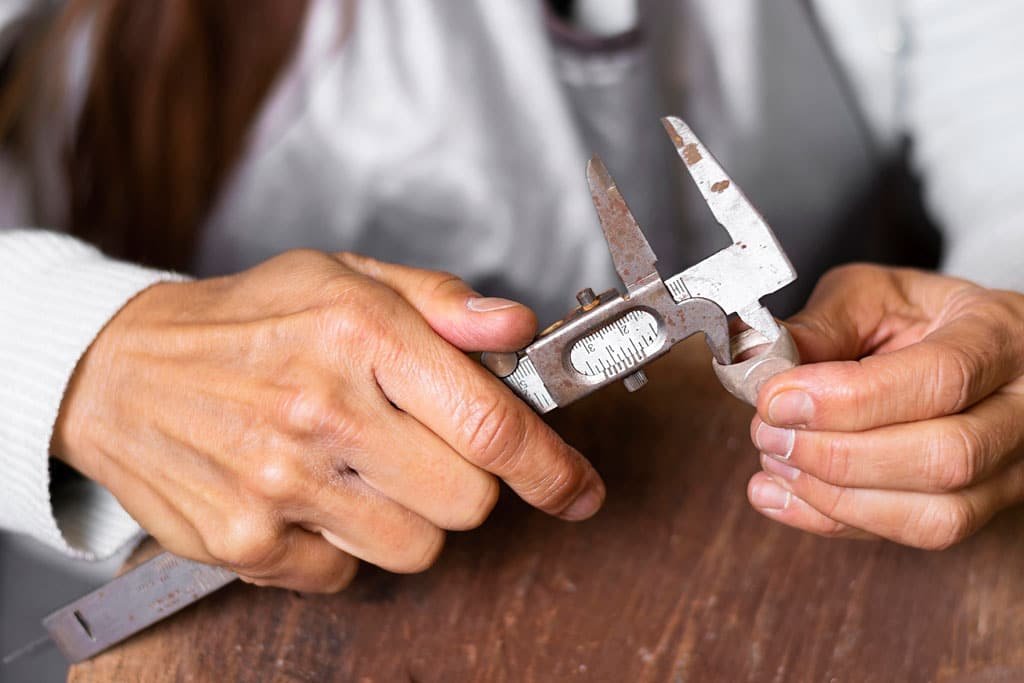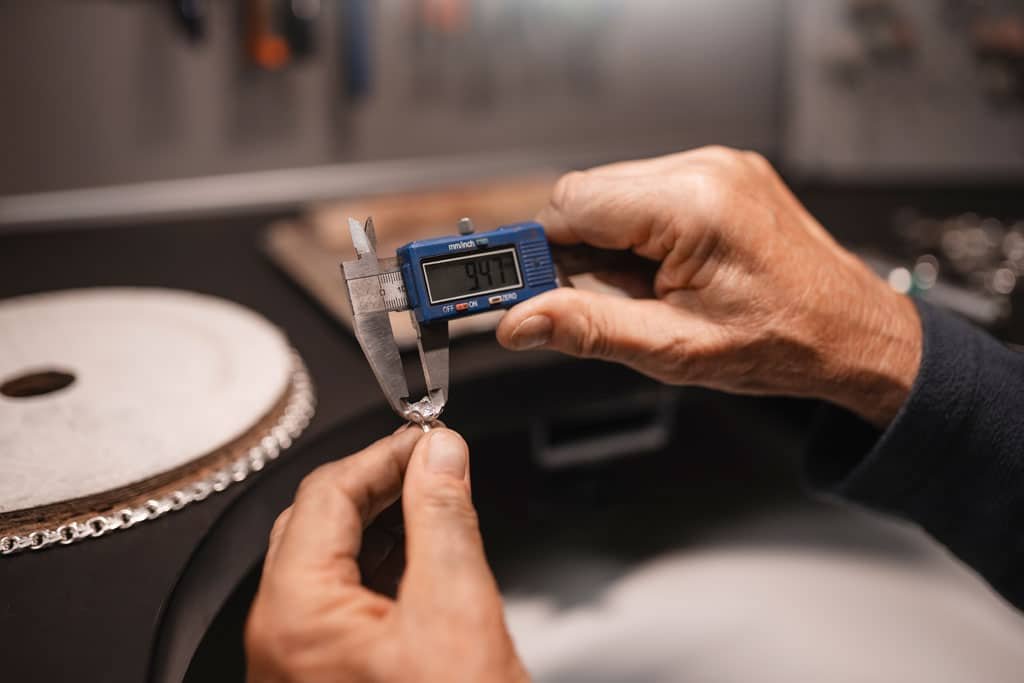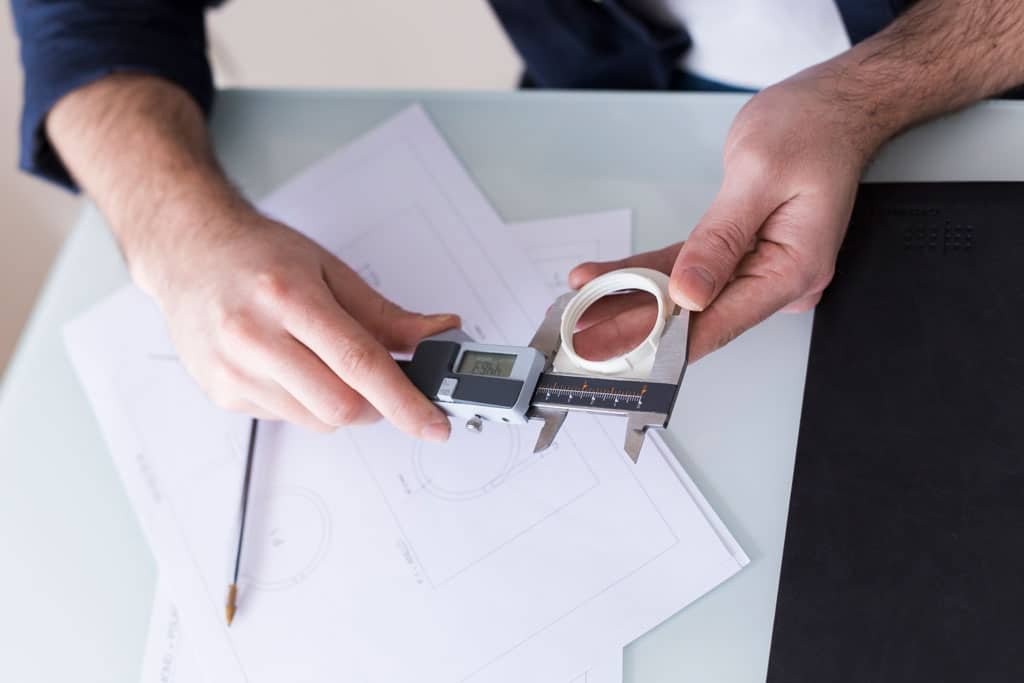The Moment You Realize a Tool Could Make Life Easier
Have you ever been squinting at a tiny dial on your caliper, trying to read 0.01 millimeters, and thought, “There’s got to be an easier way!”? Oh, I know that feeling — I’ve been there too. It’s frustrating, time-consuming, and can even make you doubt your own accuracy.
Well, here’s the good news: sometimes all it takes is a small change — an upgrade from dial to digital calipers — to make your measurements faster, easier, and a lot more reliable. Whether you’re a machinist, woodworker, hobbyist, or engineer, the right tool can completely transform your workflow.
In this guide, we’re going to talk about how to know when it’s time to upgrade, what benefits you’ll get, and what to consider when picking your first digital caliper. And don’t worry — I’ll keep it friendly, practical, and maybe even a little fun. Because measuring stuff shouldn’t make you feel stressed. It should feel empowering.
Understanding Calipers — Dial vs. Digital
What Are Dial Calipers?

Dial calipers have been around for decades, and they’re a staple in workshops everywhere. They work with a small dial and needle that shows your measurement on an analog scale. There’s something satisfying about turning that tiny wheel and watching the needle move, isn’t there?
Pros of dial calipers:
- Durable and long-lasting
- No battery required
- Precise if read correctly
Cons:
- Slower to read, especially for tiny increments
- Harder to see in poor lighting
- Prone to human error if you misread the needle
I remember struggling with a dial caliper during a woodworking project once. My eyes hurt, I misread a few measurements, and it made me feel so frustrated. I realized then that even a small upgrade could make a huge difference.
What Are Digital Calipers?

Digital calipers, on the other hand, are all about convenience. They feature an LCD display that shows your measurement instantly. Some even let you switch between metric and imperial with a single click.
Pros of digital calipers:
- Instant reading with high precision
- Metric and imperial conversion on the fly
- Some models store data or connect to computers
Cons:
- Requires batteries
- Slightly more fragile than some heavy-duty dial calipers
- Can be more expensive
Imagine being able to measure multiple pieces quickly without squinting at a tiny needle. It’s almost like having a superpower in your workshop.
Side-by-Side Comparison
| Feature | Dial Calipers | Digital Calipers |
| Readability | Can be tricky | Instant, clear |
| Accuracy | High if read properly | Very high, consistent |
| Speed | Slower | Faster, efficient |
| Durability | Very durable | Moderate |
| Battery Required | No | Yes |
| Ease for Beginners | Learning curve | Very beginner-friendly |
Can you imagine trying to measure dozens of small pieces with a dial caliper versus a digital one? The difference in speed and mental load is huge — and that’s one of the biggest reasons people upgrade.
Signs It’s Time to Upgrade to Digital Calipers
Frequent Reading Errors
If you constantly misread your measurements, lose track of decimal points, or get confused converting between millimeters and inches, it might be time to consider a digital caliper.
Dial calipers are fantastic tools, but they demand focus and patience. One slip and your measurement is off. Over time, those small errors can add up, and I know how disheartening it feels when your perfectly cut parts don’t fit.
Time-Consuming Measurements
Dial calipers can slow you down, especially when measuring multiple pieces or repetitive tasks. If your workflow feels sluggish and you spend more time reading the caliper than actually working, a digital upgrade can save hours — literally.
Digital calipers are faster because they give you an instant reading. Click, record, move on — it’s that simple. It fills me with relief every time I finish a long measurement session without straining my eyes or my patience.
Need for Greater Accuracy
Even the best dial caliper is subject to human error. If your projects demand tight tolerances, like machining, metalworking, or precise woodworking, digital calipers reduce that risk.
Imagine the satisfaction of knowing your measurement is exactly what it should be, every single time. That confidence is priceless, especially when the smallest mistake can ruin hours of work.
Professional or Commercial Use
If you’re measuring for clients, on a production line, or in a workshop where quality control is key, a digital caliper is practically essential. Accuracy, speed, and repeatability matter — and nothing screams professionalism like precise, consistent results.
Upgrading can also reduce stress. No more double-checking every measurement. It’s freeing.
Integration with Digital Tools
Modern digital calipers often connect to computers or tablets, letting you export measurements directly to spreadsheets, CAD software, or production logs.
Think about it — no more writing down numbers manually, no more transcription errors. It’s a workflow upgrade that feels almost magical. And it’s surprisingly satisfying to see all your data perfectly organized.
Advantages of Upgrading to Digital Calipers
Speed and Convenience
Digital calipers eliminate mental math and reduce the time you spend squinting at dials. Switching between metric and imperial is effortless.
For anyone who’s ever felt the frustration of converting inches to millimeters mid-project, this convenience alone makes the upgrade worthwhile. It’s like suddenly having a shortcut in your workflow — a little thing that makes a huge difference.
Enhanced Accuracy and Precision
Digital calipers provide a consistent readout that doesn’t rely on your eyes or patience. Once you get used to them, you start trusting your measurements implicitly.
This emotional relief — the comfort of knowing your measurements are accurate — is something every craftsman or engineer deserves. You feel in control, competent, and ready to tackle even the most delicate tasks.
Data Management Features
Some advanced digital calipers store multiple readings, log measurements, or even transmit data to computers. This is a game-changer for anyone handling complex projects.
The joy of not having to manually record each measurement is subtle but profound. It frees mental space, reduces stress, and lets you focus on what you love: creating, building, and perfecting.
User-Friendly for Beginners
If you’re just starting out, digital calipers are far less intimidating than dial models. There’s no reading a needle, no mental math, and no squinting.
It fills me with satisfaction to see beginners quickly gain confidence with digital calipers. They can focus on learning technique rather than struggling with the tool itself. And that confidence is motivating — it keeps you coming back to the workshop.
Situations Where Dial Calipers Still Shine
Rugged Environments
Dial calipers can survive harsh conditions that would damage digital models. If you’re in a metal shop, outside fieldwork, or dusty environments, a dial caliper can sometimes be more reliable.
There’s comfort in knowing that a sturdy, mechanical tool won’t fail just because the battery dies or the display fogs up.
Budget-Friendly Option
Dial calipers are generally less expensive than digital models. If you only measure occasionally or are just starting out, they’re a cost-effective way to build your toolkit.
Sometimes, being practical and resourceful feels rewarding too. You don’t always need the latest gadget to get the job done.
Personal Preference
Some users just love the tactile feel of a dial caliper. Turning the wheel, feeling the gear engage — it’s a satisfying, almost nostalgic experience.
And honestly, there’s nothing wrong with that. Tools are personal, and comfort matters.
How to Choose the Right Digital Caliper
Accuracy and Resolution
Look for calipers with at least 0.01 mm (0.0005 in) resolution if precision matters. Check the tolerance requirements for your projects and pick a model that fits.
Build Quality
Stainless steel calipers are more durable than plastic, and some are waterproof or dust-resistant. Consider where and how you’ll use them.
Battery Life and Maintenance
Digital calipers need batteries, so pick one with long-lasting power. Keep spares handy. Maintenance is minimal: clean the jaws and store properly.
Additional Features
- Absolute vs incremental measurement modes
- Data output options: USB or Bluetooth
- Auto shut-off for battery conservation
Having a caliper that’s feature-packed can feel like unlocking a new level of efficiency. It’s genuinely satisfying.
Making the Upgrade — Practical Tips
Gradual Transition
Keep your dial caliper as a backup while you learn the digital one. Compare readings to ensure you’re comfortable with the transition.
Maintenance and Care
Digital calipers are delicate. Clean them, store them safely, and replace batteries as needed. A little care now avoids frustration later.
Training and Familiarization
Practice consistent measurements and learn all the digital modes. The more comfortable you are, the more you’ll enjoy the workflow.
Cost-Benefit Analysis
Think beyond the price tag. Consider time saved, errors prevented, and the confidence gained. The emotional and practical benefits often outweigh the initial investment.
How Digital Calipers Minimize Human Error and Improve Workflow Consistency
One of the biggest, often overlooked reasons to upgrade from dial to digital calipers is error prevention. It’s something that can quietly sabotage your projects without you even realizing it. I remember countless times when I misread a dial, recorded the wrong number, or lost track of decimals — and that little mistake snowballed into hours of frustration. Can you imagine that feeling? It’s enough to make anyone tense and doubting their skills.
Human Error in Dial Calipers
Dial calipers are mechanical, beautiful, and tactile — but they rely heavily on your focus, eyesight, and hand steadiness. Even a tiny slip or misalignment of the needle can lead to incorrect measurements.
Here’s where most people struggle:
- Decimal Confusion: Mixing up millimeters and inches is easy if you forget to convert.
- Misreading the Dial: Squinting, distractions, or poor lighting can cause errors.
- Repetition Fatigue: After measuring dozens of parts, your brain can get tired, and mistakes sneak in.
All these small mistakes aren’t just frustrating — they waste time, materials, and energy, and sometimes ruin whole projects.
How Digital Calipers Solve This Problem
Digital calipers are designed to reduce these human errors in multiple ways:
- Instant, Clear Readout: No squinting or guessing numbers. You see your measurement immediately on the display.
- Metric/Imperial Toggle: One button changes units instantly — no conversions needed, no math errors.
- Zeroing Function: Easily reset the caliper at any point, preventing cumulative errors in multi-step measurements.
- Data Logging: Some advanced models store measurements or even export them to software, eliminating transcription mistakes.
It’s like having a safety net for your work — the reassurance that every measurement is exactly what it should be, every single time.
Consistency in Repetitive Work
Imagine you’re manufacturing multiple parts for a project. With a dial caliper, even small inconsistencies can creep in from one measurement to the next. Digital calipers help maintain consistent precision across dozens, even hundreds of measurements.
The emotional relief here is huge. Instead of worrying if your parts will fit, you feel confident and in control. It’s peace of mind in physical form — and that emotional lift often translates into better focus, smoother workflow, and less fatigue.
Practical Example: Woodworking or Machining
Imagine this scenario: you’re crafting a set of wooden joints that must align perfectly. Using a dial caliper, your brain has to constantly convert units, read tiny increments, and double-check measurements. By the third or fourth piece, fatigue sets in. One misread measurement and your whole set is off.
Switch to a digital caliper, and suddenly every cut and fit is predictable and accurate. Your workflow becomes smooth, and you can trust that each measurement is correct. That sense of control — the feeling that you’re finally in sync with your tools — is incredibly satisfying.
The Emotional Impact of Precision
There’s something almost therapeutic about reducing errors. You no longer dread measuring tasks. Instead, you approach them with confidence, calm, and even joy, knowing that your tools support you rather than complicate things. It’s a subtle but powerful emotional shift that improves both productivity and satisfaction.
After all, the difference between a frustrating, error-prone process and a smooth, reliable workflow isn’t just technical — it’s emotional. Upgrading to a digital caliper gives you clarity, focus, and confidence every time you measure.
Taking the Leap: Why Upgrading Makes a Difference
Deciding to upgrade from a dial caliper to a digital caliper is more than just swapping one tool for another — it’s about reclaiming precision, efficiency, and peace of mind in your work. Think about all those moments you’ve squinted at a tiny dial, second-guessed a measurement, or wasted precious minutes double-checking your numbers. Frustrating, right? That frustration doesn’t just slow down your workflow — it subtly chips away at your confidence, leaving you tense and distracted.
When you switch to a digital caliper, those small annoyances disappear. Suddenly, measurements are instant, accurate, and reliable. You can toggle between metric and imperial with the push of a button, record data seamlessly, and complete repetitive tasks without mental fatigue. It’s not just about speed — it’s about reducing errors, freeing your mind, and creating a workflow that feels natural, smooth, and even enjoyable.
For professionals, hobbyists, and students alike, this upgrade transforms more than your toolbox. It transforms the way you feel while working. That subtle shift from stress to confidence — the quiet joy of knowing your measurements are correct the first time — is priceless. Every cut, every fit, and every measurement suddenly carries clarity and satisfaction, instead of anxiety or doubt.
Even if you’re hesitant about investing in a digital caliper, consider the long-term benefits: saved time, reduced errors, improved productivity, and a more relaxed, confident approach to your projects. It’s like giving yourself permission to work smarter, not harder.
So, if you find yourself hesitating, squinting, or double-checking, remember this: upgrading is not just a technical improvement — it’s an emotional and practical boost. It’s about feeling empowered, capable, and in control. Once you experience that effortless precision, it will feel like a small adjustment with a huge impact, and you’ll wonder how you ever managed without it.
In short, choosing a digital caliper is about unlocking your potential, streamlining your workflow, and reclaiming the joy of measurement. It’s a tool, yes, but also a gateway to confidence, efficiency, and peace of mind — and that’s worth every penny.
Please read more about the best digital calipers.
FAQs about Upgrading from Dial to Digital Calipers
Are digital calipers always more accurate than dial calipers?
Digital calipers are more user-friendly and reduce human error, but high-quality dial calipers can be just as precise if read correctly.
Can I use digital calipers in dusty or wet environments?
Some models are dust and water-resistant, but dial calipers may be more reliable in extremely rugged conditions.
How long do digital caliper batteries typically last?
Usually 1–2 years with moderate use. Advanced models may have longer battery life or auto-shutoff features.
Are digital calipers harder to maintain than dial calipers?
Slightly, due to battery replacement and delicate electronics, but basic care like cleaning and safe storage is usually enough.
Is it worth upgrading if I only measure occasionally?
Even occasional users benefit from faster readings, easier conversions, and reduced eye strain. The emotional relief alone is worth it.

